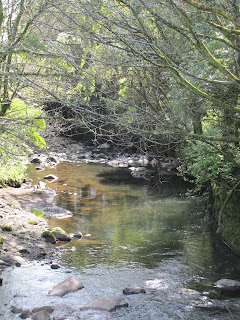Week 31: Indigenous Knowledge and Cultural Responsiveness
A culturally responsive pedagogy understands where their
students have come from. The teacher values the experiences the students bring
to the classroom and uses the students experiences to build their learning.
A culturally
responsive pedagogy has five elements:
1. Knowledge about cultural diversity
2. Culturally integrated content in the
curriculum
3. The development of the learning community
4. Ability to communicate with culturally diverse
students
5. Culturally responsive delivery of instruction
(Gay, 2001)
The
Education Teachers’ Council have developed a new code of ethics and this has an
emphasis on teachers embedding in their pedagogy cultural responsiveness.
I first
learnt about culturally responsive pedagogy through a He Katahitanga
Professional Development training in the 2,000’s. This information informed me
about strategies I could use to block the ‘deficit’ theory of my ‘high
priority’ learners and to improve the relationships I had with these students
and their whanau and improve the students’ academic outcomes which would
directly improve their future. The day we spent at the Okorotua Marae was
enlightening and engaging. It was such a pity that government funding was
pulled and any further progress in this training was left to schools as part of
their professional development budgets, which meant it got lost in the busyness
of the days and the priorities of subject enhancement.
The vision
of Russell Bishop and his team was extraordinary, and it is pleasing to see
that He Katahitanga has been resurrected alongside He Kakano. Perhaps now real
progress can be made.
Our 2018
academic year began with a day of ‘Culture Counts’. “Culture Counts has been developed by
Cognition Education in collaboration with Emeritus Professor Russell Bishop.
Culture Counts supports educators to build effective relationships with their
students, with an emphasis on minority and minoritized students” (Cognition
Education, 2018). I was pleased to see that Russell Bishop’s research was now
at the forefront again and was being valued and utilised.
Over the
past two years our school has been focussing on Priority Learners and Maori
Achievement in essence, to increase the academic outcomes of our under-performing
students.
As an HOD of
Digital Technologies and a Year 10 Dean, my goal is to shift our Department’s
programmes and planning to being more culturally responsive; and the care of
our students by co-constructing the curriculum with students and developing our
learning agency more effectively. My
vision is to develop more responsiveness to the student and show greater care
for Maori students as Maori, as we all know that “care in the classroom to
build that learning relationship is at the centre of academic achievement” (CORE
Education, 2017).
In order, to
encourage student and family agency and taking responsibility for their own and
their child’s educational achievement I always discuss with families their
hopes and dreams for their child and how can we foster these dreams into
reality.
Each student
in my care has “unrealised potential and unlimited potential” (Dr Pedro
Noguera), and it is my job to make sure that I do my part in allowing the Maori
learners to find and enjoy their education success and achievement as Maori.
References:
Bishop, R., Berryman, M., Cavanagh, T., Teddy, L., Clapham,
S., Lamont, R., Jeffries, A., Copas, S., Siope, A. & Jaram, D. (2008). Te
Kotahitanga: Towards sustainability and replicability in 2006 and 2007. Report
to the New Zealand Ministry of Education.
CORE Education.(2017, 17 October). Dr Ann Milne,
Colouring in the white spaces: Reclaiming cultural identity in whitestream
schools.[video file].
Dr
Pedro Noguera, the Peter l. Agnew Professor of Education at New York University.
Ways in which schools are influenced by social and economic conditions
Education
Council New Zealand. (2017) Our Code, Our Standards
Gay, G. (2002). Preparing for culturally responsive
teaching. Journal
of Teacher Education, 53(2),106-116.
Ministry
of Education. He Kakano Te Awe O Nga Toroa




Comments
Post a Comment